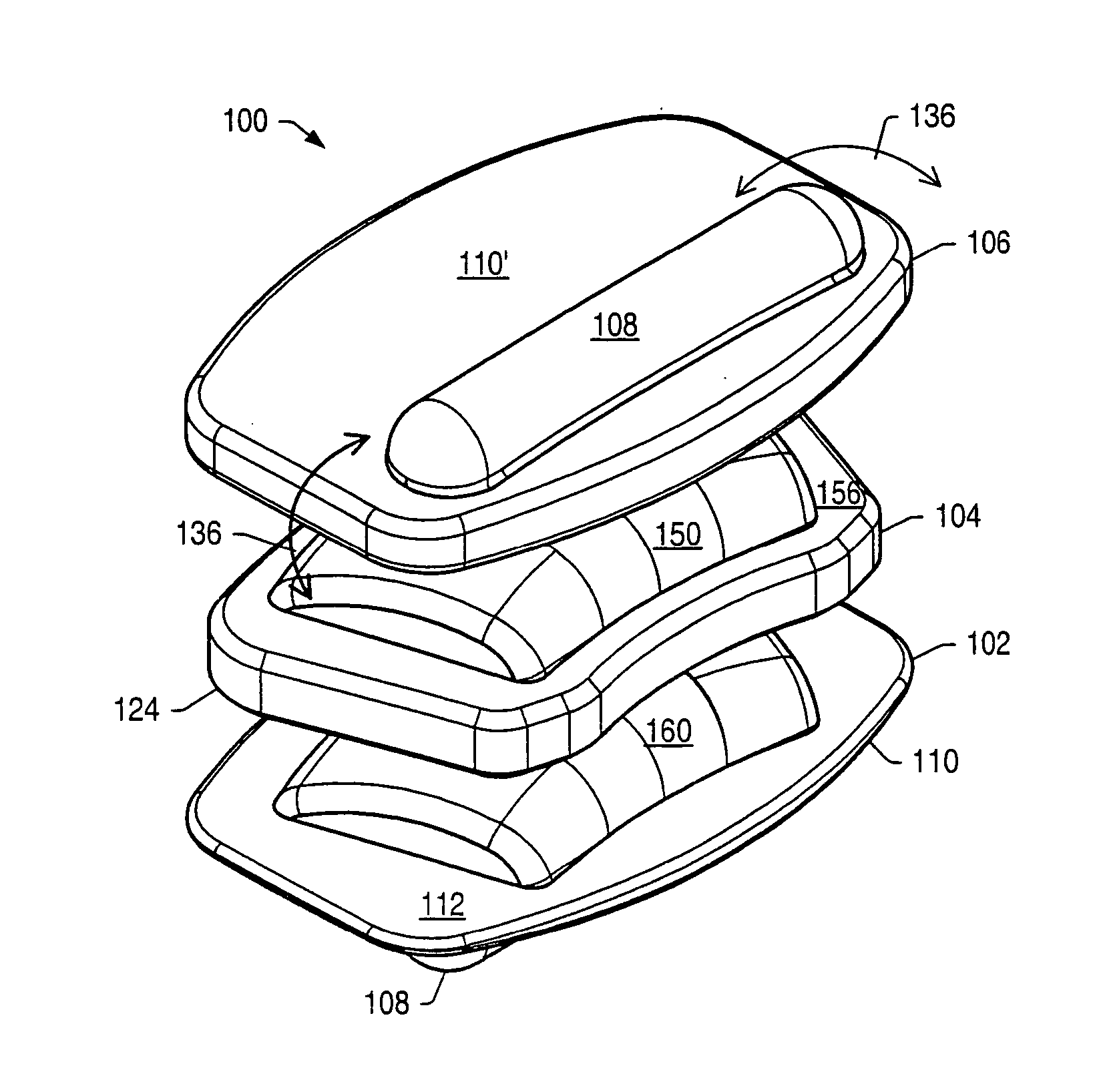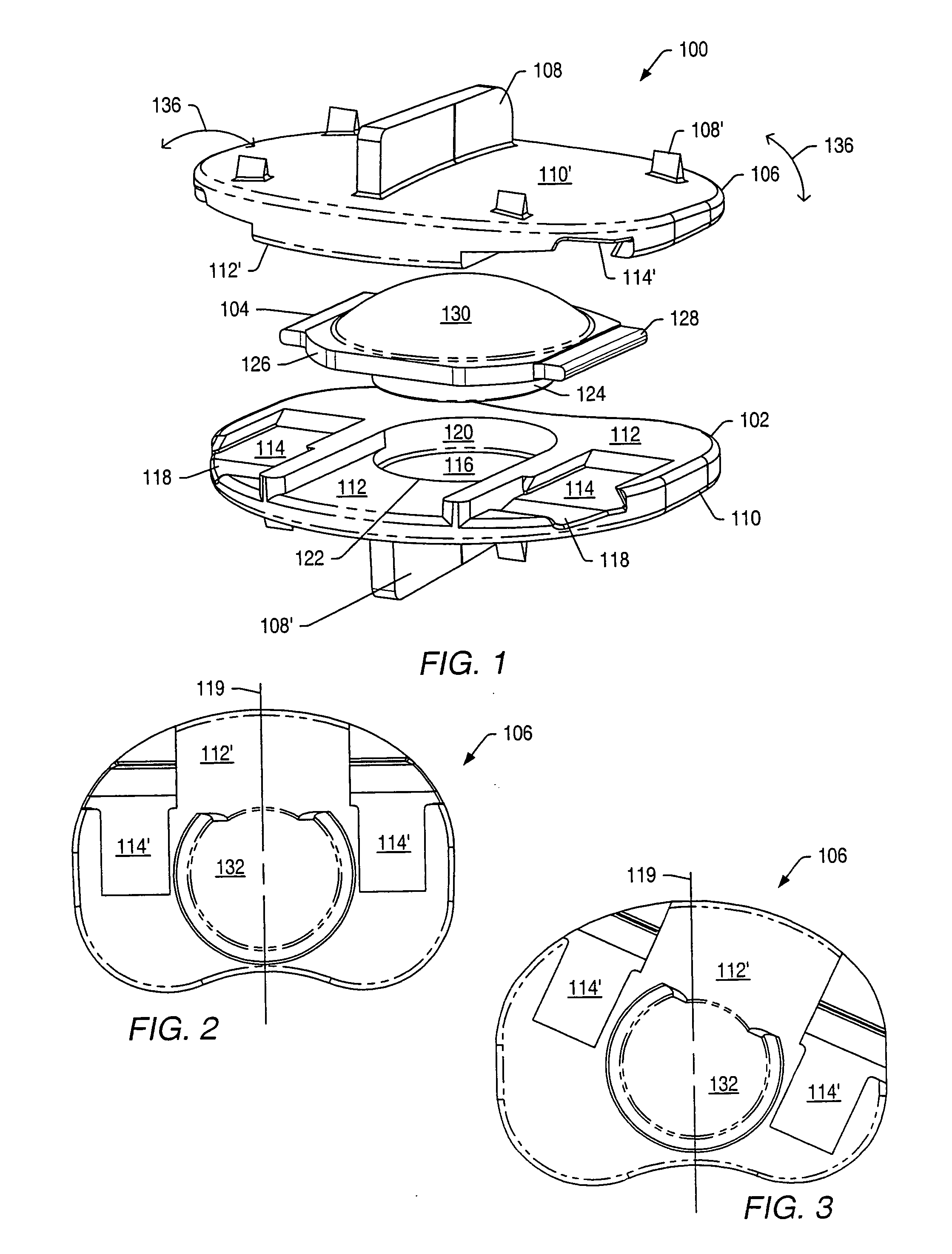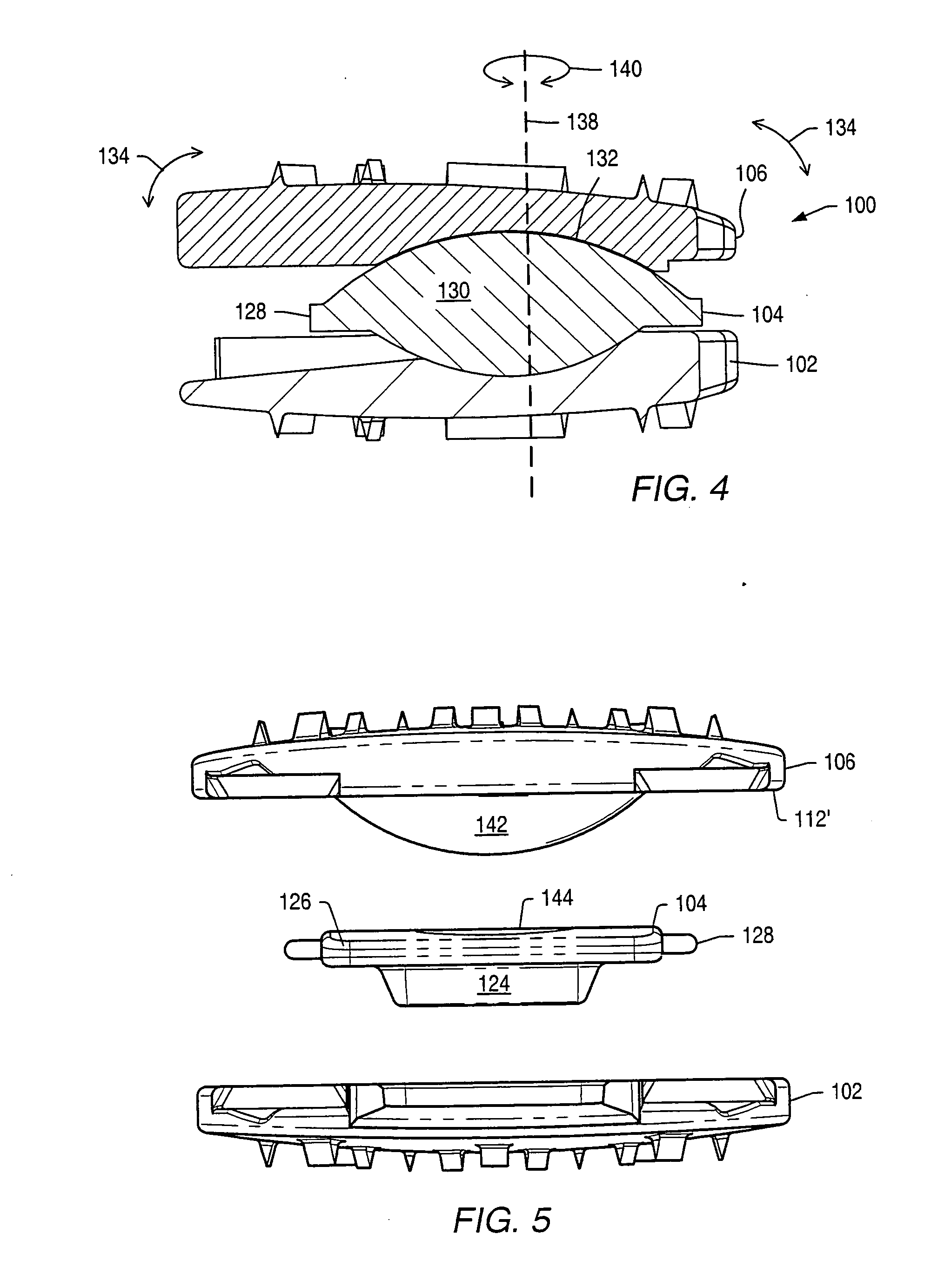Movable disc implant
a technology of moving discs and implants, applied in the field of medical devices, can solve the problems of destabilizing bone and affecting surrounding structures, pain and/or nerve damage, and altering the natural spacing between adjacent vertebrae, so as to reduce nois
- Summary
- Abstract
- Description
- Claims
- Application Information
AI Technical Summary
Benefits of technology
Problems solved by technology
Method used
Image
Examples
Embodiment Construction
[0061] An intervertebral disc implant may be used to stabilize a portion of the spine. The artificial intervertebral disc implant may replace all or a portion of an intervertebral disc that requires replacement due to degeneration from natural wear, trauma or disease. The artificial intervertebral disc may restore the normal separation distance between the vertebrae and allow normal movement and flexibility of the spine.
[0062] Disc implants may allow movement of adjacent vertebrae relative to each other in ranges associated with normal limits for human vertebrae. Disc implants may allow axial rotation, axial compression and lateral and / or anteroposterior movement. In a human spine, axial rotation may include rotation of about 0.1° to about 3° about a longitudinal axis of the spine. An axis of rotation between vertebrae may be off-center due to the fibrocartilaginous nature of an intervertebral disc. An axis of rotation between two vertebrae may be located posterior to a mid-point b...
PUM
| Property | Measurement | Unit |
|---|---|---|
| angle | aaaaa | aaaaa |
| angle | aaaaa | aaaaa |
| height | aaaaa | aaaaa |
Abstract
Description
Claims
Application Information
 Login to View More
Login to View More - R&D
- Intellectual Property
- Life Sciences
- Materials
- Tech Scout
- Unparalleled Data Quality
- Higher Quality Content
- 60% Fewer Hallucinations
Browse by: Latest US Patents, China's latest patents, Technical Efficacy Thesaurus, Application Domain, Technology Topic, Popular Technical Reports.
© 2025 PatSnap. All rights reserved.Legal|Privacy policy|Modern Slavery Act Transparency Statement|Sitemap|About US| Contact US: help@patsnap.com



